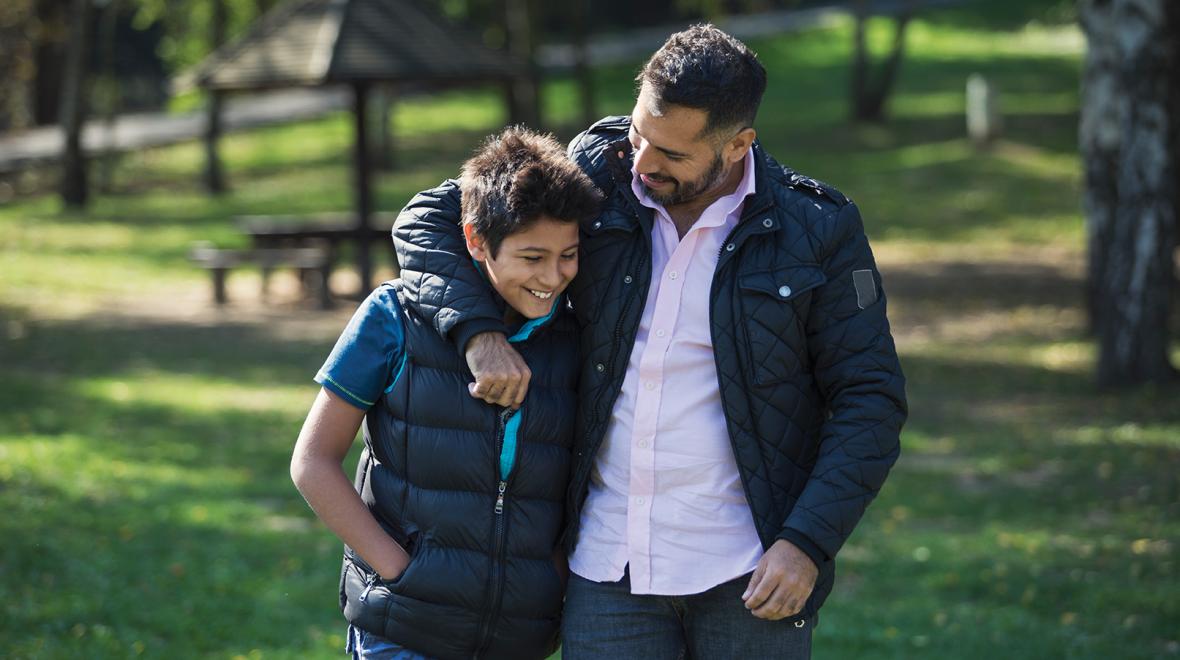
Editor's note: This article was sponsored by The Department of Health.
The Washington State Department of Health recently launched Under the Influence … of You, a statewide campaign encouraging parents of teens and other influential, trusted adults to talk with youths ages 12–17 about the risks and consequences of using marijuana. The campaign reminds parents of the positive impact they can have on teens’ lives; encourages them to have simple, frequent conversations with their teens about marijuana; and offers tips on how to talk with teens about making healthy choices.
The gist:
- When parents are involved in teens’ lives, teens are less likely to engage in risky behaviors, such as underage marijuana use.
- Conversations are powerful and show that a parent cares. When a teen knows their parent, teacher, coach or other trusted adult is invested in their well-being, it can help encourage healthy choices later.
- Even when the conversations are “cringey” and/or it looks like teens are not listening, they care about the opinions expressed by trusted adults in their lives. Teens (especially younger teens) report that their parents are a primary resource for information on marijuana. Teens also report that their parents’ opinions influence their choices when it comes to marijuana use, and some choose to avoid using it for fear of disappointing them.
- Conversations — not lectures — are critical. Teens want to be respected and heard, and they may have many questions. Parents can be a resource for reliable information and help counter misinformation from friends and social media.
- For more information, visit the Start Talking Now website.
Raising a child to healthy, drug-free adulthood is every parent’s goal, but the path is littered with the obstacles of peer pressure, vape advertising and confusion over marijuana legalization. Fortunately, decades of research confirm that parents do shape their teens’ perceptions of drug and alcohol use, and that they can successfully steer their kids away from high-risk activities and toward healthy behaviors. Bonding with your kids, setting boundaries and monitoring kids’ activities are causally linked to better outcomes, including avoidance of drugs and alcohol.
Despite all apparent indications to the contrary, your teen really is under the influence of you.
Bonding matters
Moodiness and squabbles come with the territory of adolescence, and bonding doesn’t mean you never have problems. “Frequency, intensity and a pattern of problems at school, with friends and with house rules are red flags,” says Laura Kastner, Ph.D., a clinical professor of psychiatry and behavioral sciences at the University of Washington. It’s great if your kid likes you and you do things together for fun, but what matters most is that your child knows they can count on you. “Are you the person they come to in a crisis?” asks Kastner.
Setting boundaries
“Household rules do not impede bonding,” says AnaMaria Diaz Martinez, assistant professor and a youth and family regional specialist at Washington State University Extension. Just because kids protest against parental rules doesn’t mean that they would be either happier or better off without them. Kastner concurs: “Kids who know their parents absolutely do not approve of substance use and will have consequences [for it] don’t use as much as other kids.”
The more explicit you are about your expectations, the better. Diaz Martinez says kids are often confused about marijuana. “What youths perceive about legalization can be very different from reality,” she warns. Parents should make sure their kids understand that marijuana is illegal for minors, regardless of whether it is smoked, eaten, vaped or consumed in any other way devised by creative users.
“Structure sets you free,” says Kastner. Busy kids — kids who get exercise and who are academically and socially engaged at school — have fewer opportunities and fewer reasons to experiment with substance use. And the idea of supervised experimentation at home? Not only is it still illegal, but it doesn’t actually reduce risky behaviors.
Monitoring
Monitoring is about safety and courtesy, not about suspicion. That said, “It is very preventative to know the families of their friends and to check in with them. Feel entitled to pick up the phone for reconnaissance,” says Kastner. She identifies five pieces of information that parents should require their kids to share with them — no excuses:
- Where they will be
- Who will be with them
- When they are coming home
- How they are getting there and back
- When there is a change in plans
Tips for having ‘the talk’
Conversations about risky behaviors such as marijuana use are powerful; they demonstrate to kids that you care and really do influence their choices. But talking to your kids early and often without lecturing or threatening is easier said than done.
Gender, age, temperament, previous parental use of bonding, boundary-setting and monitoring strategies, and maybe even what they had for lunch will affect how different kids respond. But some approaches are generally more effective than others.
Keep it light
Kastner calls this approach the “swirl-in.” Casually starting a conversation about a news article, something that happened at school or other people’s stories keeps kids from getting defensive. Asking personal questions and taking an approach that’s too serious risks turning a conversation into an interrogation. Try talking near your kids instead of to them. If your teen doesn’t even let the conversation start, try creating opportunities for them to overhear conversations, say on the way to soccer practice or at the dinner table — such conversations can have more impact than direct one-on-ones.
Gamifying the discussion can work well with younger kids. Kastner suggests prompting kids with “What if …” scenarios to practice skillful refusal and decision-making. “There are so many interesting hypothetical situations — and kids are riveted,” says Kastner.
Stick to the facts
Lengthy lectures on the hazards of marijuana use are not helpful or necessary. You’re going to be talking about this often, so keep it short and simple. Dispense facts one or two at a time.
“It’s good to use stories, but if you overplay the drama, you lose credibility,” warns Kastner.
Studies show that kids have questions about marijuana. By all means keep trying different approaches to draw them out, but don’t feel like you’re failing if they don’t ask questions. “Don’t expect a ‘kumbaya’ moment,” says Kastner.
What to say
Your message is always much stronger if you model the behavior you require from your child, and lying only risks your credibility. Even if parents use marijuana themselves, “Some rules apply differently to youth and adults,” says Diaz Martinez. Just as kids can understand why toddlers can’t drive, they can be made to understand the important reasons for youths to avoid experimentation with marijuana.
Key talking points for parents about why marijuana use is bad for teens:
- Using marijuana can change the way a teen’s brain develops and have lasting effects on memory, learning and intelligence.
- Marijuana is more addictive for teens than adults. One in six people who start using as teens will become addicted. In Washington state, most teens who get treatment for substance abuse report that marijuana is the main or only drug they use.
- Using marijuana can affect coordination and reaction times, and is related to an increasing number of fatal vehicle crashes in Washington state, especially when mixed with other substances.
- Marijuana use can lead to unpredictable behavior and poor decision-making, which can put the user and others in harm’s way.
- It is against the law for people younger than 21 to use marijuana, and getting caught could impact their ability to get a job in the future or obtain financial aid for college.
Start talking now
It is never too early to start teaching your kids about substance abuse. Kastner likens it to sex education. Teaching toddlers the proper names for body parts, then providing more information as they grow is both more effective and easier than sitting a teen down for “the talk.” Similarly, teaching kids about marijuana and alcohol use is easier if you’ve been talking to your kids all along about what makes bodies healthy and making safe choices.
It’s never too late to start talking. Even if it’s awkward and cringey, “Initiation of communication is critical,” says Diaz Martinez. “The longer we delay, the harder it becomes.”
Resources:For more information (in several languages) about preventing youth substance use, visit the Start Talking Now website. Suggest your teen check out You Can — a website for young people in Washington that provides information about the health effects and consequences of using marijuana. It also features videos, blogs and other content that offers healthy ways to deal with stress and boredom. Don’t hesitate to get help. Call the Washington Recovery Help Line for 24-hour emotional support, referrals and information: 1-866-789-1511. |
|
Sponsored by: |

|











